Cervical Cancer Awareness Month
January 2023
Cervical Cancer Awareness Month is throughout January 2023. Women around the world are affected by this type of cancer with 300,000 dying every year from it. The pain that comes with a cancer diagnosis cannot be underestimated and so this month WHO aims to raise awareness about cervical cancer and the HPV vaccination which is crucial to preventing the disease. This year’s theme for Cervical Cancer Awareness Month is:
Get Informed, Get Screened and Get Vaccinated.
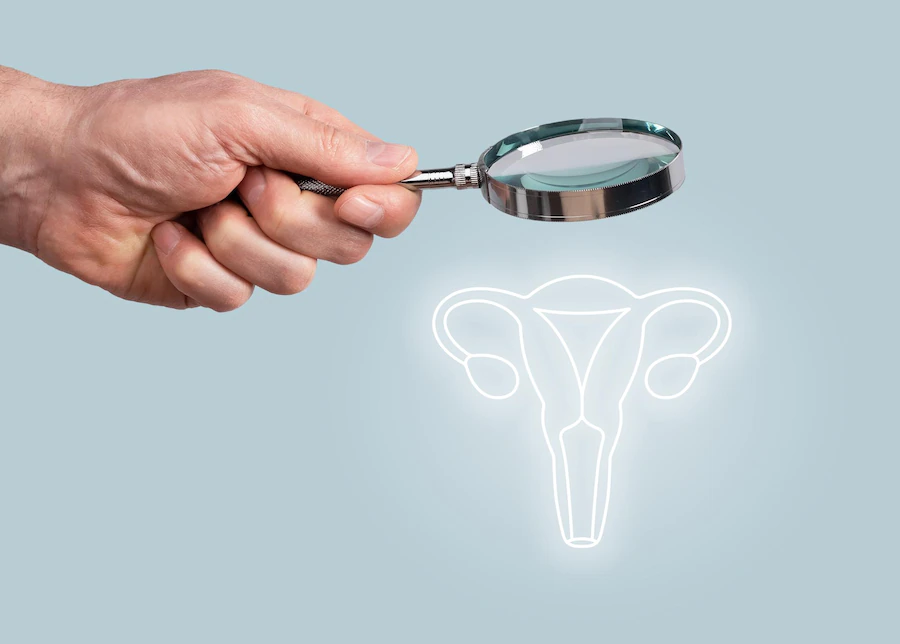
The focus is set on ending cervical cancer for generations to come and shines a light on the importance of more access to HPV vaccinations, screening and treatment for cervical pre-cancer as well as the management of cervical cancer by 2030 across the world.
What is Cervical Cancer?
Cervical cancer is a type of cancer that develops in the cells of the cervix. It is usually caused by a virus called human papillomavirus (HPV), which is spread through sexual contact. Cervical cancer is often asymptomatic in the early stages, but symptoms can include vaginal bleeding, pelvic pain, and pain during intercourse, therefore it is vital to look out for these signs. However, it can be prevented with regular screenings and a vaccine that can protect against certain types of HPV. If you are diagnosed with it, fortunately there are treatment options which include surgery, radiation therapy, and chemotherapy.
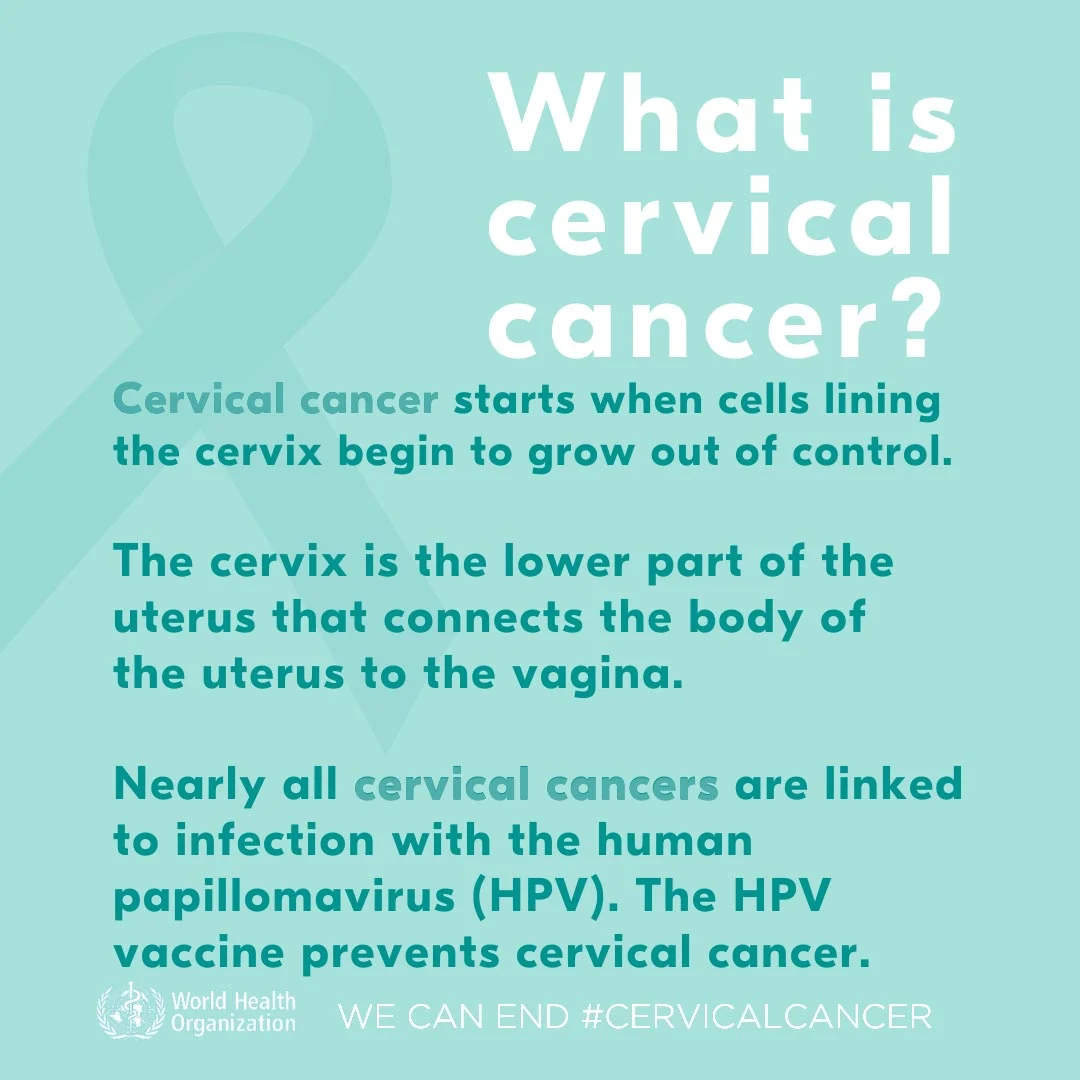
What is WHO’s Goal?
In 2020, the World Health Organization (WHO) set a goal to eliminate cervical cancer as a public health problem globally by 2120. To reach this goal, WHO’s Member States should strive to meet the following interim scale-up targets by 2030:
Did You Know?
– An estimated 13,960 new cases of invasive cervical cancer will be diagnosed in 2023.
– About 4,310 women will die from cervical cancer in 2023.
– It is most frequently diagnosed in women between the ages of 35 and 44.
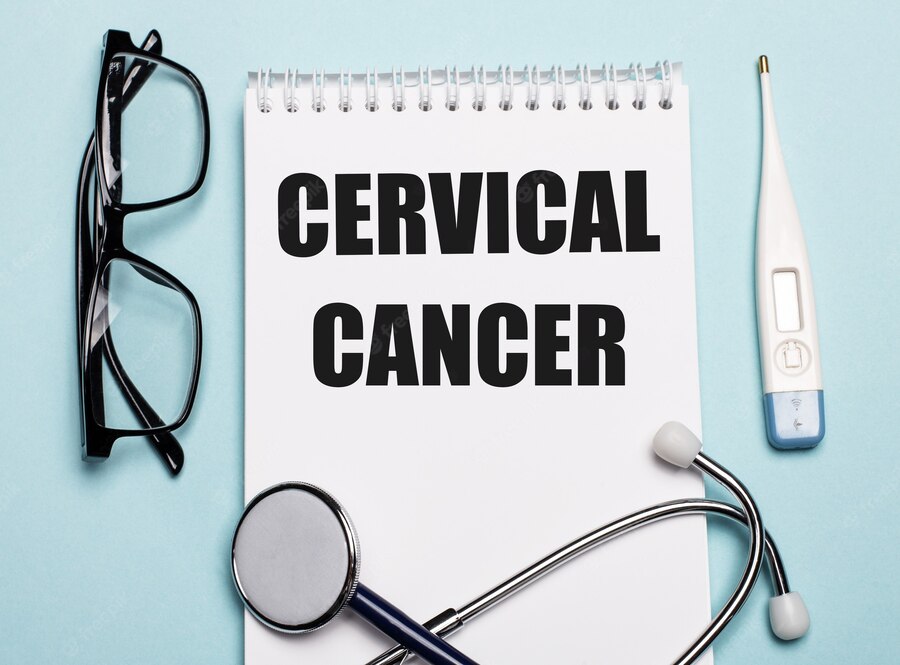
What Are The Symptoms?
Noticing the symptoms early can prevent it from becoming life threatening. However, during the initial stages of cervical cancer there may be no symptoms, this is why regular screening is extremely important. As it further develops, symptoms include:
- Vaginal bleeding after intercourse
- Abnormal Vaginal discharge with foul odor
- Pelvic pain during intercourse
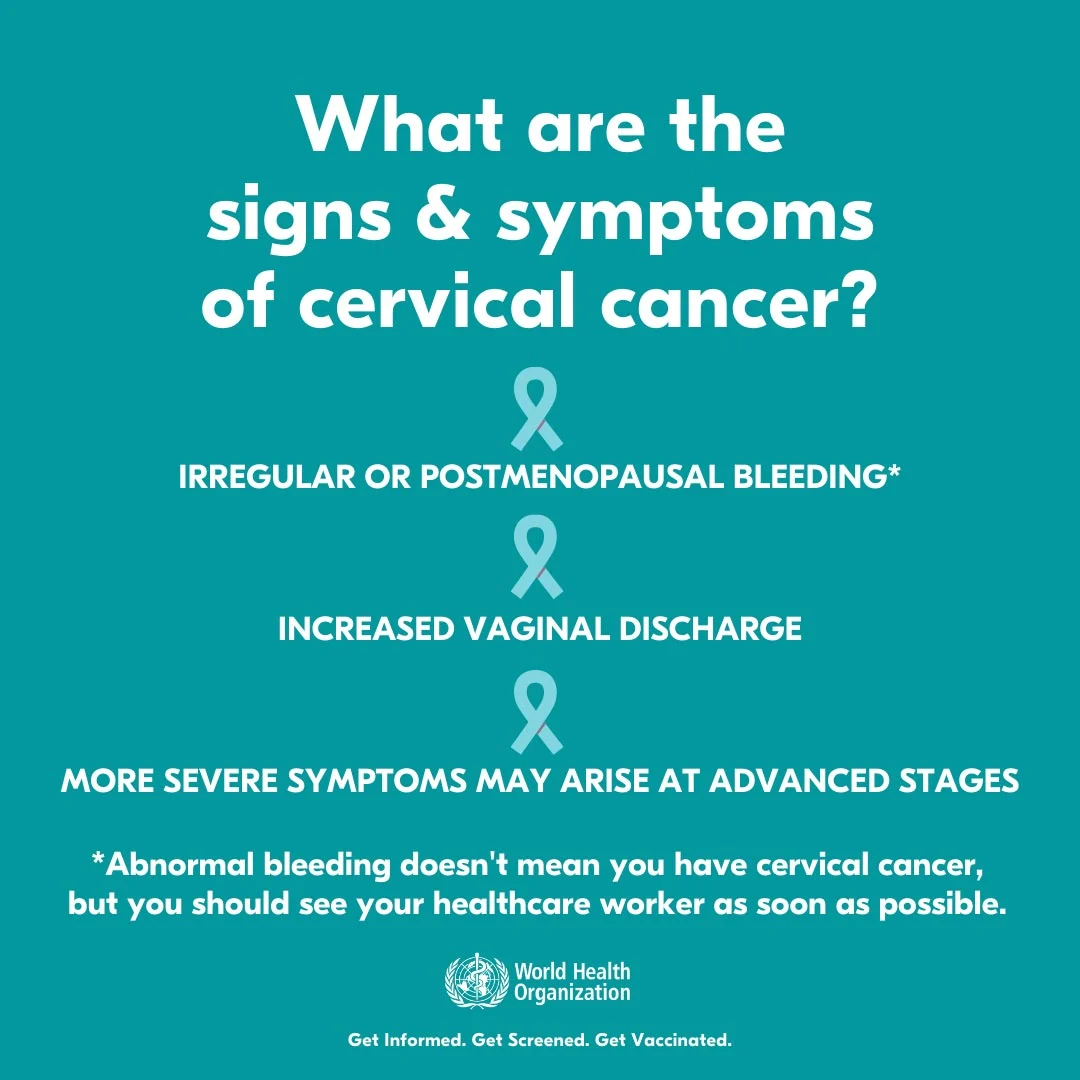
How Can it Be Prevented?
Luckily, there is a way to prevent this type of cancer, the most important way is through awareness which can prevent future generations from dying from it. By speaking about it and getting regular check ups, thousands of women across the world don’t have to die needlessly.
Cervical cancer can be prevented in the following ways:
1. Getting vaccinated against HPV: Vaccinations are available from age 9 to 26. The vaccine is effective if administered before becoming sexually active.
2. Regular pap smear tests: To detect the cancerous conditions of the cervix after 35 years.
3. Safe sexual practices: Such as using condoms.
4. Avoid smoking: Smoking is associated with squamous cell cervical cancer.
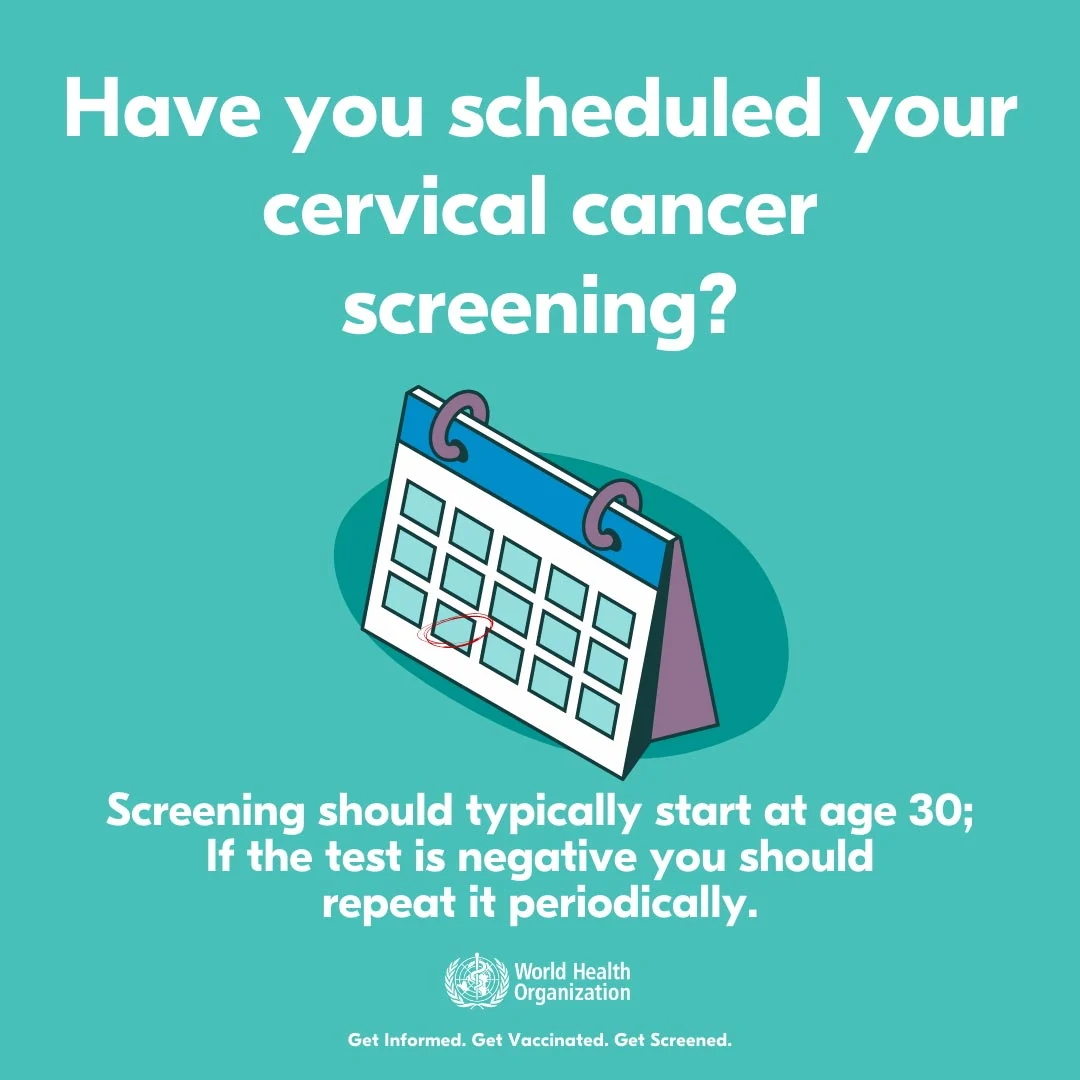
Can it Be Cured?
Yes, cervical cancer can be cured through regular screenings, early diagnosis and prompt treatment. In fact, cervical cancer is one of the most preventable and treatable types of cancer. Treatment options include surgery, radiation, chemotherapy and forms of nutrition.
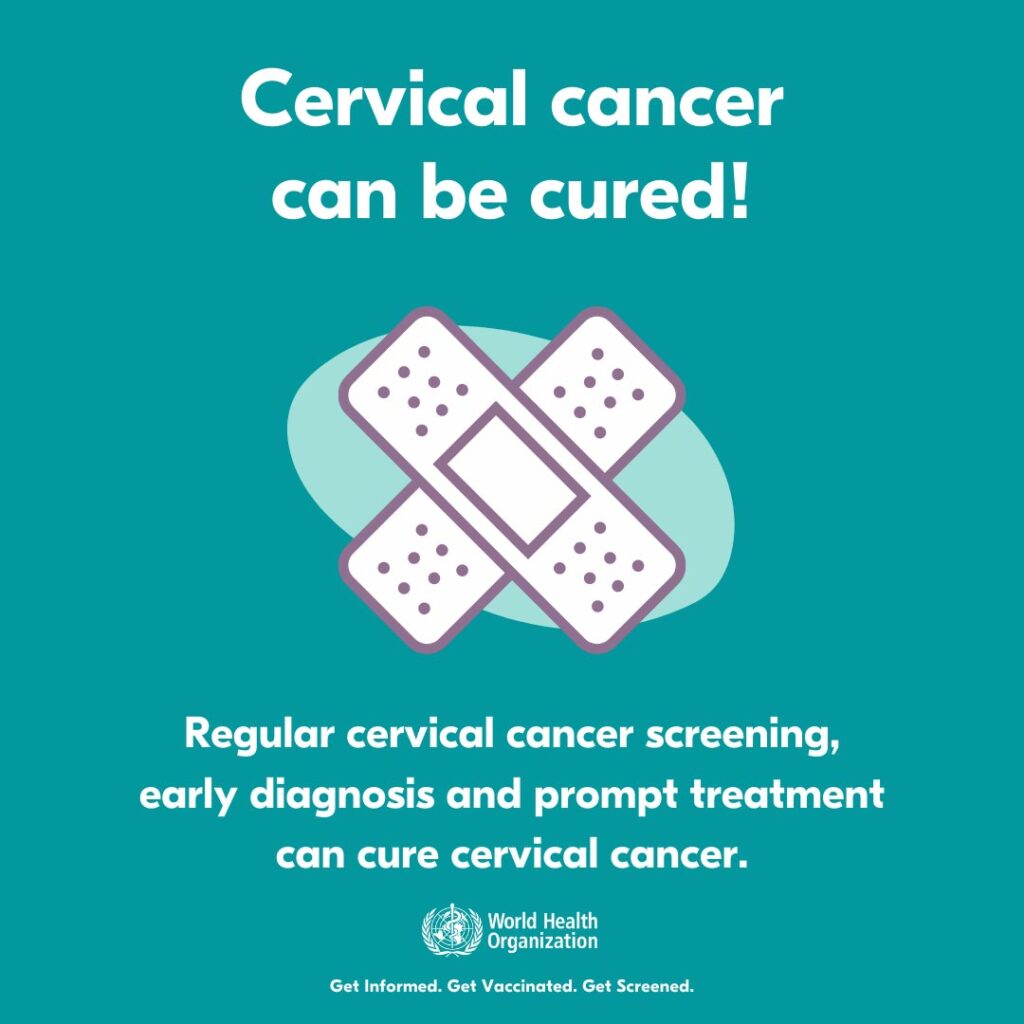
Surgery
- This can be in the form of a simple hysterectomy where the cervix and uterus are removed along with the cancerous tumor. It is done in the very early-stages of cervical cancer. A radical hysterectomy is where the cervix, uterus, part of the vagina and lymph nodes are removed along with the cancerous tumor.
Radiation
- This utilizes high-powered energy beams like X-rays or protons to kill cancer cells. For early stage or locally advanced cervical cancer the main treatment is usually external radiotherapy alongside chemotherapy (chemoradiotherapy). This is usually followed by internal radiotherapy.
Chemotherapy
- Chemotherapy (chemo) uses anti-cancer drugs that are injected into a vein or given by mouth. These drugs enter the bloodstream and can reach almost all areas of the body, making this treatment useful for killing cancer cells in most parts of the body.
Nutrition
- Some foods are known for their extraordinary cervical cancer fighting nutrients but are not meant to replace the above methods of treatment.
- Turmeric has been shown to contain a compound that can identify potential cancer cells by their abnormal chemistry and consequently induce self-destruction of such harmful cells — without damaging healthy cells.
- Salmon is known to provide an excellent source of omega 3-fatty acids — healthy fats that are often in short supply in Western diets and that are believed to have a protective effect against cancer.

So let’s work together this month to raise awareness and help current and future generations to live a full and healthy life free from cervical cancer. Get Informed, Get Screened and Get Vaccinated.
At Servisource we provide essential healthcare which gives you the peace of mind that you are taken care of.
Previous Posts:

How A Recruitment Talent Solutions Partner Can Support Your Business
How A Recruitment Talent Solutions Partner Can Support Your Business As businesses navigate the ever-evolving landscape of talent acquisition and management, the role of strategic partnership becomes increasingly vital. In today’s competitive market, companies are seeking more than just a service provider, they seek a trusted ally and a partner who understands their unique needs…

New Year, New Talent and Strategic Hiring in Healthcare
New Year, New Talent and Strategic Hiring in Healthcare As we step into 2024, the healthcare industry continues to face challenges as well as opportunities. In a rapidly evolving landscape, the need for top-notch healthcare professionals has never been greater. For healthcare facilities, this is the time to reevaluate strategies with a new year, new…

An Overview of the Servisource Winter Plan
An Overview of the Servisource Winter Plan Servisource recognises the unique challenges facing the HSE this winter. We are fully prepared for a winter where healthcare service demand may surge and we have consistently played a pivotal role in supporting the Irish Health Service during the demanding winter months. The Servisource annual Winter Plan has…

5 Ways to Manage Your Workload in the Run-Up to Christmas
5 Ways to Manage Your Workload in the Run-Up to Christmas Christmas time always creeps around faster than expected, the month of December seems to come and go in the blink of an eye. Employees check over the list of things to do before the end of the year and instead of ticking off the…

How Students with Disabilities Can Achieve Their Career Goals
How Students with Disabilities Can Achieve Their Career Goals Every individual, regardless of their abilities, deserves the opportunity to chase their dreams and build a successful career. However, for college students with disabilities, this journey can often have unique challenges and obstacles that require specialised support and guidance. By exploring the vital role that educational…

Bridging the Gap in International Staffing
Bridging the Gap in International Staffing The need for dedicated, skilled, and compassionate healthcare professionals will always be constant within the medical sector. With a growing demand for healthcare services worldwide, recruitment companies have become pivotal players in ensuring that facilities have access to the talent they need, bridging the gap in international staffing. Permanent…